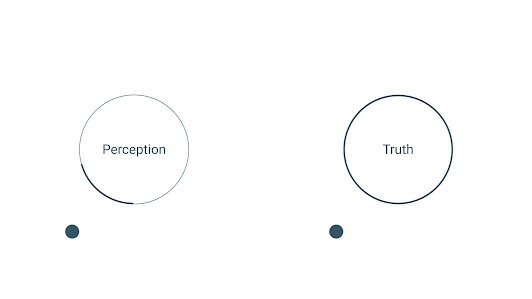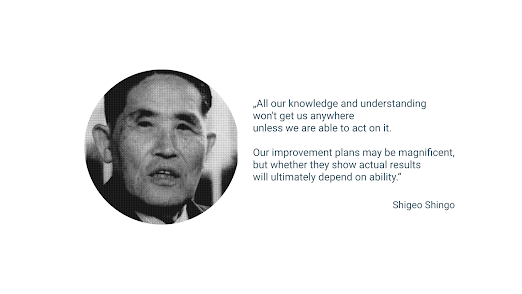L4: Production mechanism
My favorite doctor is a dentist. I always look forward to the twenty minutes of torture on the dentist's chair. Just kidding - I hate it. I think everyone does. Maybe the dentist performing the routine likes it, and perhaps he does not like it too 😏
I mean, I can manage to be calm during the intervention. It, however, depends on the office equipment and the atmosphere. Being attached to the dentist's chair in the basement with no windows is a totally different experience than being in the dentist's office for children with colorful things and even cartoons on TV. Of course, it depends on preferences 👦
What happens during the visit to a dentist, and how is it related to LEAN?
Everyone was at least once at a dentist's office. Being a LEAN manager, you would directly spot many things for improvement. However, that is not the point for now. Let's take a step back and focus on the basics. What work is performed at the dentist from a production point of view?
When you enter the dentist's office, you are directed to the famous chair – the place where the magic happens. A dental hygienist covers your chest with a plastic or paper cloth, or you may even get eye shields to wear, too. He also prepares a tray of metal and ultrasonic tools. A dental hygienist will use them when working on a tooth - to scrape off any hard buildup of plaque and tartar on the surfaces and along your gumline. After that's done, you'll rinse well. Using a tool with a spinning head, the hygienist polishes your teeth. You might even get to choose the flavor of buffing paste – unfortunately not offered to adults 😌
Then the hygienist brings the dentist in to do a thorough exam, checking each tooth and looking for pockets or gaps between your teeth and gums or directly helps you with the issue with your teeth you need to solve - if it is not a routine check
Yeah, and one more thing a chair is adjustable. So from time to time, you find yourself sitting with your head lower than your feet – a pretty pleasant experience too 😃
From the production point of view, I have just described a workflow. Workflow of operations that are necessary to perform the process. When we visit the dentist's office, we need him to do a specific thing. For example, remove the tartar, fix the teeth, or even remove the teeth if it hurts too much. A "specific thing" is what we pay for. Before a doctor can do his job, a certain level of preparation is needed – workflow of operation.
When the hygienist prepares the teeth and the chair is in the proper position, the doctor comes to do the process. By process, I mean the transformation of teeth or a tooth to the desired state.
The process is, for example, a tartar removal by a hygienist. Literally, the hygienist is transforming our "dirty" teeth into a nice, clean, and shiny smile. Btw. You'll have fresher breath, too.
The operations are all the actions that preceded the process, like covering the chest with a plastic cover, preparing a tray with tools, and adjusting the chair (even selecting the suitable cartoon on TV)
Visiting the dentist's office - from when we enter the room till when we are leaving - is the set of operations and processes. The same is valid for production. Production is a set of operations and processes.
Visiting the dentist's office - from when we enter the room till when we are leaving - is the set of operations and processes. The same is valid for production. Production is a set of operations and processes.
Process in production is transforming raw material to a semi-processed component or event to a final product. It is a flow of material in time and space. In other words, objects of production change according to methods, space, and time.
By operations in production, I mean the work performed to accompany transformation from material to a product. In other words, the interaction and flow of agents of production in time and space.
Seeing the production through the lens of processes and operations totally changed how I see the application of LEAN and continuous improvement.
In the book Zero Quality Control, Shigeo Shingo states:
"To optimize the production efficiency, thoroughly analyze and improve processes before attempting to improve operations."
Looking back on the improvements I highlighted during benchmark visits or Gemba walks, I must admit that I mainly focused on operations improvement. The reason is simple. The operations are easy to see. You just observe what people are doing. How does the person know what to do? How the operator gets the material? Is everything in its place? My improvements proposals were related to ergonomics, 5S, and possibly safety – so to workflow. And that was continuous improvement.
We can continuously improve workflow. And it is OK. We need to take care of people's safety, improve their working conditions, and take care of the equipment. No doubt about that. Under one condition - to have the right processes in place.
The process dictates the operations that are necessary to accompany the transformation of material to product. Meaning, if we change the process, the operations will change as well. Improving operation over and over again might have overall no impact on the whole process flow - if we don't have efficient processes. Improve processes before attempting to improve operations.
We all have limited resources. Not enough time, money, people. We need to therefore prioritize and focus our resources on things that matter – things that bring the most value. Being in production is like being on the open sea. Navigating is difficult and making a bad decision is highly possible as there are many ways to go. Unless you know where you are going and where you are.
Differentiating between operation and processes in production helps us to answer the question of where we are. To get from where we are to where we want to be, we need to distinguish product flow (process) from the workflow (operations) and analyze them separately.
Follow-up Care:
When your mouth is healthy, you should probably get a cleaning and exam every 6 months. Depending on what the dentist finds during your exam, they'll recommend a treatment plan, dealing with the most needed care first ;)
Marek
Source:
Production mechanism: Shigeo Shingo books: Zero Quality Control, A study of Toyota production System from Engineering point of view, Key strategies for Plant improvement
Visiting dentist: https://www.webmd.com/oral-health/dental-visit-adult




Comments
Post a Comment